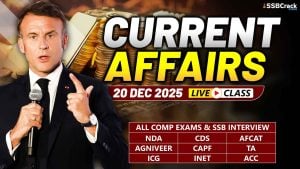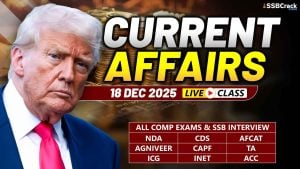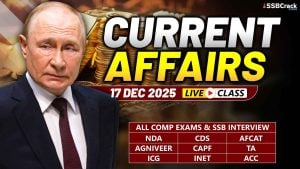India becomes 4th nation to get IMO nod for own navigation satellite system
- India has become the fourth country in the world to have its independent regional navigation satellite system recognised by the International Maritime Organisation (IMO) as a part of the World-Wide Radio Navigation System (WWRNS).
- The other three countries that have its navigation systems recognised by the IMO are the US, Russia and China.
- The Indian Regional Navigation Satellite System (IRNSS) was designed to provide accurate position information services to assist in the navigation of ships in Indian Ocean waters. The Director General of Shipping (DGS) had approached the IMO for granting recognition to the IRNSS as a component of the WWRNS, similar to the US-owned Global Position System (GPS) or Russia’s Global Navigation Satellite System (GLONASS) – a process that took two years.
- On Friday, Director General of Shipping Amitabh Kumar told, “Overdependence on any one system is not safe. The IMO has encouraged various countries to design their own satellite navigation systems. The IMO has now accepted IRNSS as an alternative navigation module. It was in use only on a pilot basis earlier but now all merchant vessels are authorised to use it, even small fishing vessels.”
- Kumar said the IRNSS was a modern and more accurate navigation system and at any given time, there are at least 2,500 merchant vessels in Indian waters that will now be able to use the system. The IRNSS will be used to assist in the navigation of ships in ocean waters within the area of approximately 1,500 km from the Indian boundary, the DGS said in a statement.
- The statement said, “Details of the tests carried out on merchant ships with regard to the accuracy of the system were included in the report prepared by Indian Space Research Organisation (ISRO) which was submitted to IMO for consideration.”
- Calling it a significant achievement towards the ‘Atmanirbhar Bharat’ initiative of the Union government, the statement said, “The Maritime Safety Committee of IMO during its recent meeting held from 4 to 11 November 2020 has approved the recognition of the IRNSS as a component of the World-wide radio navigation system.”
US proposes strategic collaboration on AI with India
- The US National Security Commission on Artificial Intelligence has proposed a US-India strategic know-how alliance for growing a know-how technique and analysis on rising applied sciences within the area of defence, safety, mentioned Eric Schmidt, chairman of the fee.
- He was just about addressing the Inspired India, annual common assembly of Federation of Indian Chambers of Commerce & Industry (FICCI).
- Schmidt mentioned the US and India have room to develop and ‘it’s crucial that these nations work collectively to deal with these geopolitical challenges and fast advances in AI and rising applied sciences.
- “Our AI commission has recently proposed a formal US-India strategic technology alliance, literally a formal activity of the US government to develop a regional tech strategy and collaborate on joint research and development projects, talent exchanges, …using AI to address common societal concerns,” mentioned Schmidt, including that ‘the commission sees the tech alliance is a critical step in the strategic focus of US policy in the Indo-Pacific region around emerging technologies with India as its focal point’.
- The know-how alliance would construct on the already robust relationships between the 2 largest democracies, he added.
- He mentioned the fee has additionally urged the US Department of State to accomplice with the Ministry of External Affairs, Government of India to carry an inaugural excessive degree assembly to resolve on a “concrete agenda”.
- The two nations would focus on utilizing AI for cooperation on defence and safety points. He additionally emphasised on the truth that AI must be utilized in the suitable methods. “I feel an urgency to get AI right. My sense of urgency is amplified because of (the) broader economic and strategic developments, you cannot ignore these trends in the international landscape. US’s competitors see power in AI in similar terms and they are using it for different reasons and different means. China is rapidly becoming an AI peer in many areas,” Schmidt mentioned.
U.S. Navy tanker-drone take off for the first time with an aerial refuelling pod
- American plane-maker Boeing has reached a major milestone when its MQ-25 carrier-based tanker drone test article, also known as T1, completed the first test flight with an aerial refuelling store.
- According to a company news release, Boeing and the U.S. Navy have for the first time flown the MQ-25 T1 test asset with an aerial refueling store (ARS), a significant milestone informing development of the unmanned aerial refueler.
- As noted by the company, the pod contains the hose and basket that will help refuel Navy fighter aircraft.
- The successful 2.5-hour flight with the Cobham ARS – the same ARS currently used by F/A-18s for air-to-air refueling – was designed to test the aircraft’s aerodynamics with the ARS mounted under the wing. The flight was conducted by Boeing test pilots operating from a ground control station at MidAmerica St. Louis Airport in Mascoutah, Ill.
- “Having a test asset flying with an ARS gets us one big step closer in our evaluation of how MQ-25 will fulfill its primary mission in the fleet – aerial refueling,” said Capt. Chad Reed, the U.S. Navy’s Unmanned Carrier Aviation program manager. “T1 will continue to yield valuable early insights as we begin flying with F/A-18s and conduct deck handling testing aboard a carrier.”
- Future flights will continue to test the aerodynamics of the aircraft and the ARS at various points of the flight envelope, eventually progressing to extension and retraction of the hose and drogue used for refueling.
- “To see T1 fly with the hardware and software that makes MQ-25 an aerial refueler this early in the program is a visible reminder of the capability we’re bringing to the carrier deck,” said Dave Bujold, Boeing’s MQ-25 program director. “We’re ensuring the ARS and the software operating it will be ready to help MQ-25 extend the range of the carrier air wing.”
- The Boeing-owned T1 test asset is a predecessor to the engineering development model aircraft being produced under a 2018 contract award. T1 is being used for early learning and discovery, laying the foundation for moving rapidly into development and test of the MQ-25. Following its first flight last year, T1 accumulated approximately 30 hours in the air before the planned modification to install the ARS.
- Earlier this year the Navy exercised an option for three additional MQ-25 air vehicles, bringing the total aircraft Boeing is initially producing to seven. The Navy intends to procure more than 70 aircraft, which will assume the tanking role currently performed by F/A-18s, allowing for better use of the combat strike fighters.
Russia releases video of Bulava ballistic missiles test
- The Russian Defense Ministry on Saturday has released a short video of the recently Bulava submarine-launched ballistic missiles test.
- Video released 12 December by the Russian Ministry of Defense shows the salvo launch of four Bulava ballistic missiles from the Borei-class ballistic missile submarine Vladimir Monomakh in the Sea of Okhotsk.
- Also added that Defense Minister of the Russian Federation Army General Sergei Shoigu informed Supreme Commander-in-Chief of the Russian Federation Vladimir Putin about the final stage of the combat trials to control the strategic offensive forces.
- “During them, the Pacific Fleet’s strategic missile-carrying underwater cruiser Vladimir Monomakh made a salvo launch of four Bulava ballistic missiles from its submerged position at a distance of more than 5,500 kilometers from the Sea of Okhotsk,” Defense Ministry said in a statement.
- The ministry added that “all the missiles’ warheads successfully arrived at the designated area of the Chizha combat field.”
- The Bulava intercontinental ballistic missile had been developed by the Moscow Institute of Thermal Technology since the mid-1990s under the direction of Chief Designers Yuri Solomonov and Alexander Sukhodolsky.
- According to media reports, the Bulava is a three-stage solid-propellant missile that can carry up to six independently targeted warheads.
- The drills for the strategic nuclear forces’ command and control began in Russia on December 9 under the command of Russia’s Supreme Commander-in-Chief, President Vladimir Putin.
- The drills involved the hardware of land-based, navy and air components of the Russian strategic nuclear forces. Ballistic and cruise missiles were fired from submarines and land-based launchers as well as from Tu-160 and Tu-95MS bombers of the Russian Aerospace Forces. All the launches were performed as planned.
South Korean Light Armed Helicopter cleared for active combat
- South Korea’s Defense Acquisition Program Administration (DAPA) has reported that the new Light Armed Helicopter, commonly known as LAH, has been initially declared fit for combat.
- DAPA’s evaluation has concluded that the LAH program can transition from the development to the pre-production phase, according to multiple reports.
- The new helicopter, developed by the Korea Aerospace Industries (KAI), designed for replacing the Republic of Korea Army’s aged attack helicopters (MD-500, AH-1S). The LAH project is the one that aims to develop a cutting-edge armed helicopter suitable for the modern battlefield.
- The LAH has been developed around the LCH (Light Civil Helicopter), a local version of the Airbus Helicopters H155 twin-engined platform. Through the synergy of maximizing commonality in subsystems and parts with LCH, KAI will reduce the development, production, and sustainment cost.
- The new combat aerial platform features stub wings provisioned to carry 70mm rocket pods, as well as a nose-mounted electro-optical/infrared (EO/IR) sensor and a 20mm three-barrelled turret gun, fuselage- and tail-mounted missile warning receivers, and upwards-directed exhausts for a reduced IR signature.
- LAH conducted its first flight successfully in 2019. KAI aims to complete the development of LAH in 2022.
- As of today, 3 prototype helicopters have conducted over 850 hours of test flights in the past year.
Passing Out Parade of CTW MCTE Mhow (13-Dec-20)
- Lt Gen Milind N Bhurke Commandant MCTE reviewed the splendid Parade.
- 31 Gentleman Cadets of TES-36 Course got commissioned into the Indian Army.
Passing Out Parade of CTW CME Pune (13-Dec-20)
- Lt Gen PP Malhotra, Commandant CME, Pune reviewed the Passing Out Parade.
- In this 36th TES Course at CTW, 34 Gentleman Cadets including 05 from Bhutan were commissioned as Officers into the Army.
Passing Out Parade of MCEME CTW (12-Dec-20)
- 30 Gentlemen Cadets of Technical Entry Scheme (TES-36) course passed out from the portals of Cadets Training Wing (CTW), Military College of Electronics and Mechanical Engineering (MCEME) under the aegis of ARTRAC.
Union Home Minister pays floral tributes to Martyrs of the 2001 Parliament House Attack
- Shri Amit Shah said, “My homage to the brave sons of Mother India, who made the supreme sacrifice defending the 2001 cowardly terrorist attack on the temple of democracy, the Parliament House. A grateful nation will always remain indebted to your martyrdom. I bow to their exemplary courage and sacrifice”
- Union Home Minister Shri Amit Shah today paid floral tributes to the brave Martyrs who laid down their lives while protecting the Parliament House in the 2001 terrorist attack.
- In his tweet to mark the 19th Anniversary of the dastardly attack, Shri Amit Shah said, “My homage to the brave sons of Mother India, who made the supreme sacrifice defending the 2001 cowardly terrorist attack on the temple of democracy, the Parliament House. A grateful nation will always remain indebted to your martyrdom.” “I bow to their exemplary courage and sacrifice,” he added.
- On 13 December 2001 terrorists of the Lashkar-e-Taiba and Jaish-e-Mohammed stormed the Parliament complex and fired indiscriminately. They were gunned down after a fierce battle in which five Delhi police personnel, a women CRPF trooper and two personnel of the Parliament House watch and ward staff and a gardener were killed. A journalist who sustained injuries died later.
QUICK REVIEW
- Who had approached the IMO for granting recognition to the IRNSS as a component of the WWRNS that took two years in process?
- Director General of Civil Aviation
- Director General of Shipping
- Director General of MSMEs
- Director General of CSIR
ANSWER: B
- India become ____ nation to get IMO nod for navigation satellite system.
- Second
- Third
- Fourth
- Fifth
ANSWER: C
- Which U.S. Navy tanker-drone took off for the first time with an aerial refuelling pod?
- MQ-25 Stingray
- RQ-21 Blackjack
- MQ-8C Fire Scout
- FQM-151 Pointer
ANSWER: A
- The Light Armed Helicopter (LAH) that has been recently cleared for active combat belongs to which country?
- Republic of Korea
- Republic of Seychelles
- South Sudan
- Armenia
ANSWER: A
- The Headquarters of Military College of Electronics and Mechanical Engineering (MCEME) is in
- Gorakhpur
- Pune
- Prayagraj
- Secunderabad
ANSWER: D



















